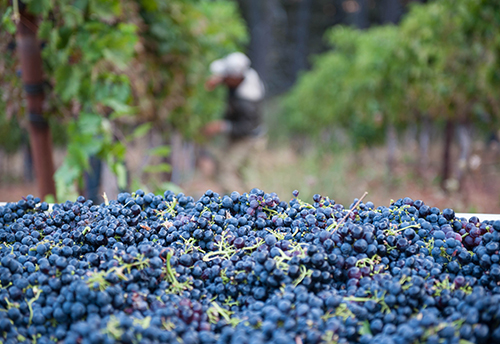1. Brix:
No, this isn’t what the third little pig built his house out of, but rather a scale used to measure the sugar content of grapes and wine. Each degree Brix (˚B) is equivalent to 1 gram of sugar per 100 grams of grape juice. The amount of alcohol that a wine will produce is estimated by multiplying the Brix reading (typically 22-26 degrees Brix at harvest) by 0.55. Therefore, 22˚B will make a wine with about 13.2 percent alcohol.
2. Dry:
Can a wine be wet and dry? Yes – when you are talking like a winemaker. A wine is dry when there is no residual sugar. When grape juice is fermented into wine, alcohol is produced when yeast eats the sugar in the juice. In some cases, a winemaker chooses to stop the fermentation process before the yeast eats all the sugar, leaving the wine a little bit sweet. To make a dry wine, the winemaker will let the fermentation go until the yeast consume all of the sugar.
3. Punchdown:
No, it’s not a new, hip, gym class, it’s actually a technique to keep the fermenting wine and skins mixed up during red wine fermentation. As the wine ferments, the skins rise to the top and form a thick cap. The cap has to be broken up multiple times a day to extract color and flavor, and to prevent the cap from drying out. Winemakers use what looks like a giant potato masher to break up the cap, or in other words, punch it down.
4. Racking:
It may sound like a medieval torture method, but it is really just a way to clarify a wine. Once the solids (skins, yeast cells, etc.) have settled to the bottom, the clear wine on top is transferred to another tank or barrel. This is done throughout fermentation and before bottling as a method of clarification to keep your wine perfectly clear.


